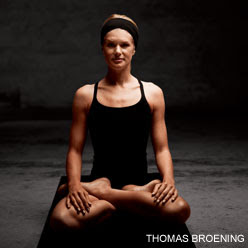Meditations for Fingers
The following meditations will help you consciously experience your individual fingers and the strength within them. You will become acquainted with your fingers, learning to trust and love them. The positive experiences that I have had confirm that the classification of chakra energy with each of the fingers is accurate. It meaningfully complements the meridian system. Your conscious and constructive thoughts are also useful.
here. As already mentioned, thoughts and feelings influence every body function. What you "set your heart on" and "talk yourself into" will manifest itself within a foreseeable amount of time.
Hindu healing practitioners already discovered long ago that too much or too little of an element (earth, water, air, fire, and ether) causes the body to become imbalanced or even seriously ill. See page 30 for more information on this topic. We can restore the harmony within us through the corresponding images. Just as every element can have a positive influence on us, it can also destroy us. The individual elements naturally influence each other. Every element has special needs that can be easily satisfied in a balanced and calm dynamic state. But how often are we stressed, rest and exercise too little, eat too much, or let ourselves be plagued by worries? All or this throws us off balance. When the body is no longer capable of attaining harmony, we are out of balance and we become susceptible to disease.
here. As already mentioned, thoughts and feelings influence every body function. What you "set your heart on" and "talk yourself into" will manifest itself within a foreseeable amount of time.
Hindu healing practitioners already discovered long ago that too much or too little of an element (earth, water, air, fire, and ether) causes the body to become imbalanced or even seriously ill. See page 30 for more information on this topic. We can restore the harmony within us through the corresponding images. Just as every element can have a positive influence on us, it can also destroy us. The individual elements naturally influence each other. Every element has special needs that can be easily satisfied in a balanced and calm dynamic state. But how often are we stressed, rest and exercise too little, eat too much, or let ourselves be plagued by worries? All or this throws us off balance. When the body is no longer capable of attaining harmony, we are out of balance and we become susceptible to disease.








